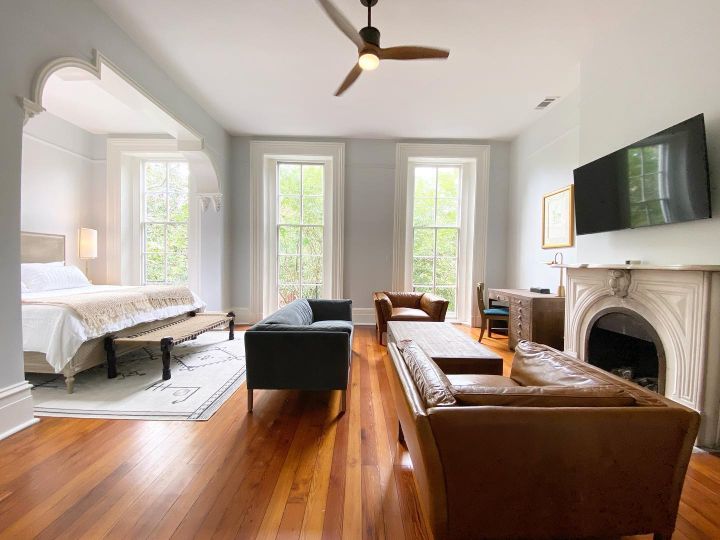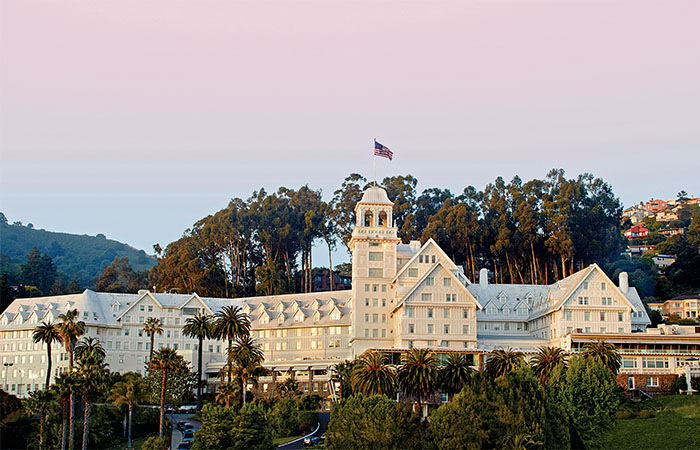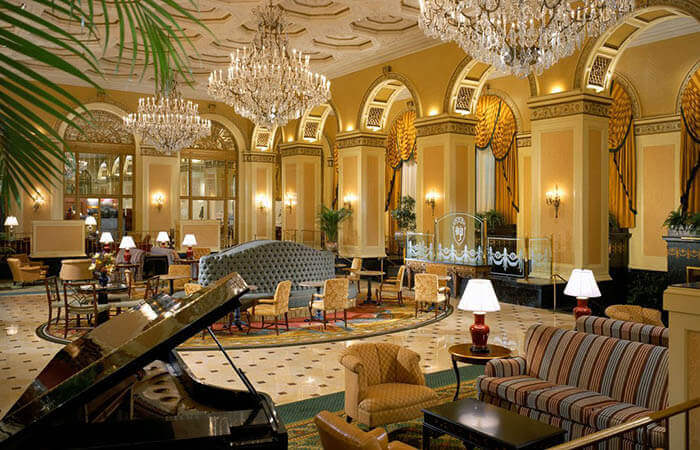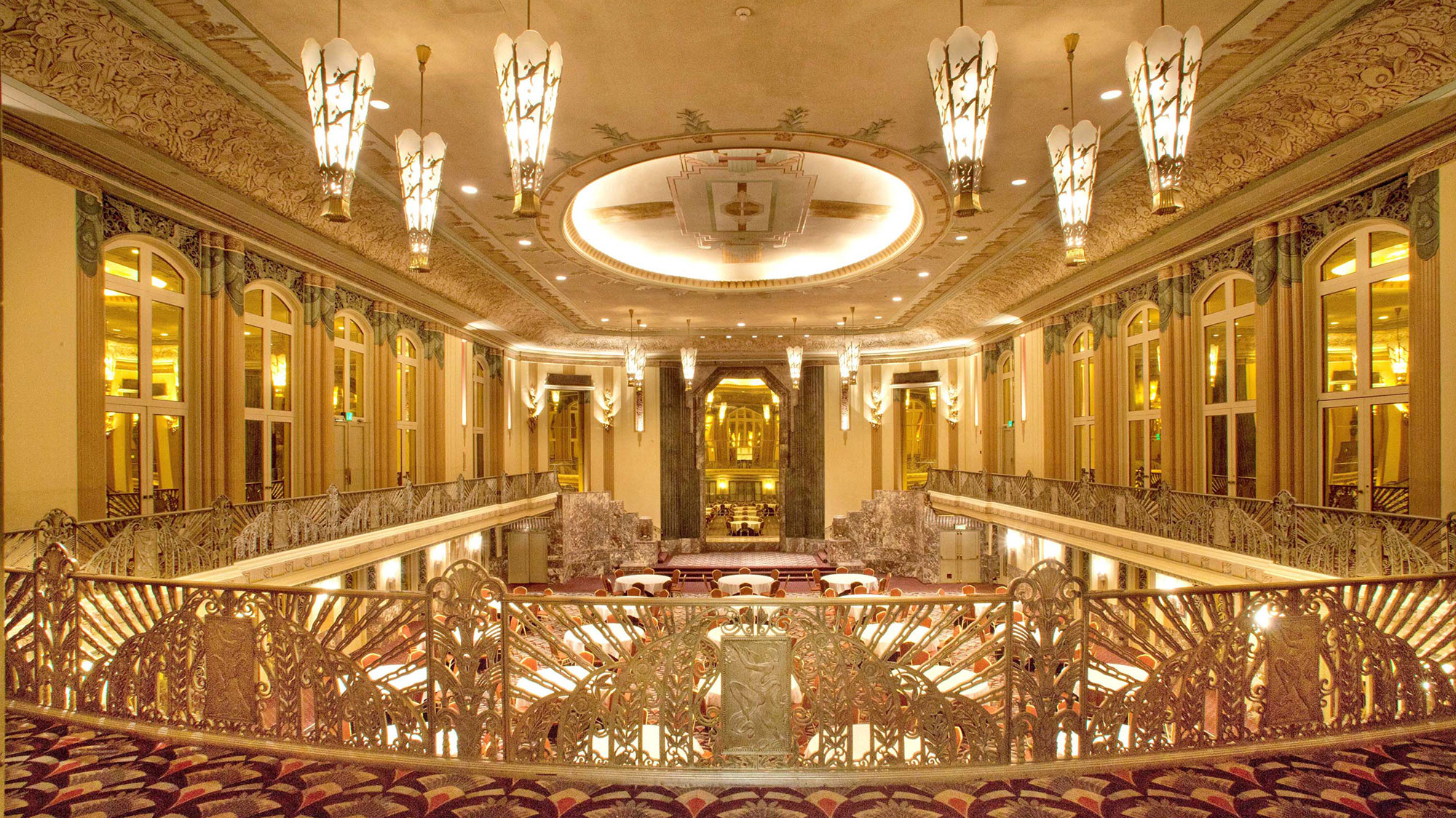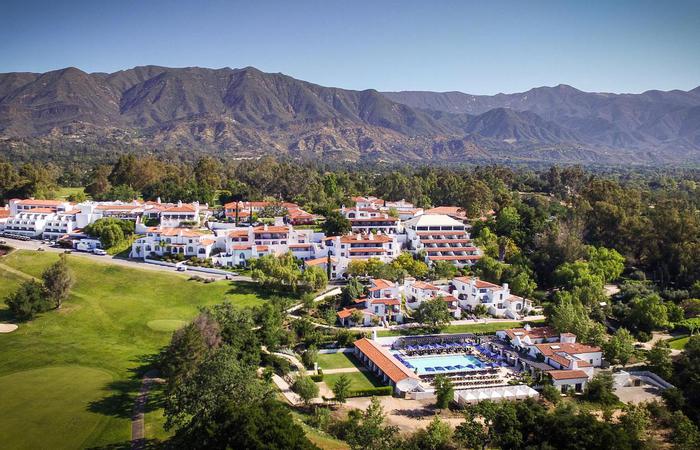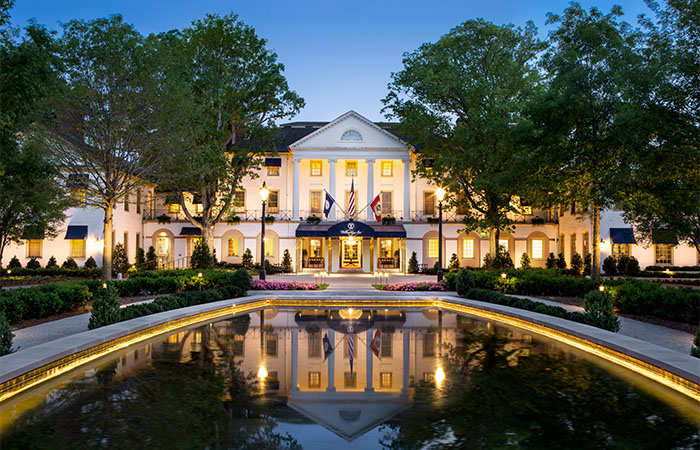Receive for Free - Discover & Explore eNewsletter monthly with advance notice of special offers, packages, and insider savings from 10% - 30% off Best Available Rates at selected hotels.
Guest Historian Series: Stanley Turkel, CMHS
Nobody Asked Me, But... No. 148;
Hotel History: Le Pavillon Hotel (1907), New Orleans, Lousiana*
By Stanley Turkel, CMHS
The Le Pavillon Hotel was originally the New Denechaud Hotel which was designed by architects Toledano and Wogan and built by the New York firm Milliken Brothers. It opened in January 1907 with 217 rooms and was known as the "Belle of New-Orleans". It achieved heights of elegance and innovation with the first hydraulic elevators and electric lighting ever to be installed in New Orleans.
Toledano and Wogan were very active in the first decade of the 20th century, designing three major new hotels in New Orleans, all of which are still in operation. The largest and best known was the Grunewald, now the Fairmont Hotel, built in 1908. The firm also designed the original building for the Monteleone Hotel on Charles Street in 1910.
Manager Justin Denechaud's father, famed hotelier Edward Francis Denechaud, had operated the Hotel Denechaud on Carondelet and Perdido streets from 1884 until his retirement in 1902. Upon opening of the New Denechaud Hotel, the senior Denechaud's nearby Carondelet Street property closed its restaurant and became a European plan hotel known as The Inn.
In 1913, new owners changed the name of the New Denechaud to the De Soto Hotel. Through wars, prohibition, and the Great Depression, the De Soto Hotel received international acclaim as one of the grandest and finest in the world. During the prohibition years, an underground tunnel led from the hotel to a building block and a half away, in case of "emergencies" needing discreet VIP passage. The penthouse was the home of New Orleans's first radio station WDSU from 1928 to 1948.
In 1970, ownership of the hotel passed into a new hands, and a major restoration project was undertaken. Crystal chandeliers from Czechoslovakia, marble floors from several locations, marble railings from the lobby of the Grand Hotel in Paris, spectacular Italian columns, and statues have found a home at the Le Pavillon. Topping it all is the rooftop pool and patio, the perfect place for a refreshing swim with a spectacular view of the Crescent City. To complete the renaissance of this living legend, the hotel was renamed Le Pavillon.
On June 24, 1991 Le Pavillon was placed on the National Register of Historic Places by the U.S. Department of Interior. It is a member of Historic Hotels of America and has been the recipient of AAA Four-Diamond award since 1996.
*excerpted from my book Built To Last: 100+ Year-Old Hotels East of the Mississippi (AuthorHouse 2013)
*****
About Stanley Turkel, CMHS
 Stanley Turkel was designated as the 2014 and 2015 Historian of the Year by Historic Hotels of America, the official program of the National Trust for Historic Preservation. This award is presented to an individual for making a unique contribution in the research and presentation of history and whose work has encouraged a wide discussion, greater understanding and enthusiasm for American History.
Stanley Turkel was designated as the 2014 and 2015 Historian of the Year by Historic Hotels of America, the official program of the National Trust for Historic Preservation. This award is presented to an individual for making a unique contribution in the research and presentation of history and whose work has encouraged a wide discussion, greater understanding and enthusiasm for American History.
Stanley Turkel is one of the most widely-published authors in the hospitality field. Two of his hotel books have been promoted, distributed and sold by the American Hotel & Lodging Educational Institute (Great American Hoteliers: Pioneers of the Hotel Industry and Built To Last: 100+ Year-Old Hotels East of the Mississippi). A third hotel book (Built To Last: 100+ Year-Old Hotels in New York) was called "passionate and informative" by The New York Times. His fourth hotel book was described by The New York Times: "Nostalgia for the City's caravansaries will be kindled by Stanley Turkel's...fact-filled...Hotel Mavens: Lucius M. Boomer, George C. Boldt and Oscar of the Waldorf."
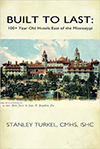
Built to Last: 100+ Year-Old Hotels East of the Mississippi is available for purchase from the publisher by visiting bookstore.authorhouse.com.























